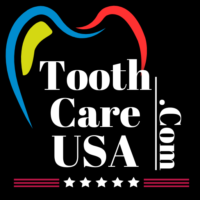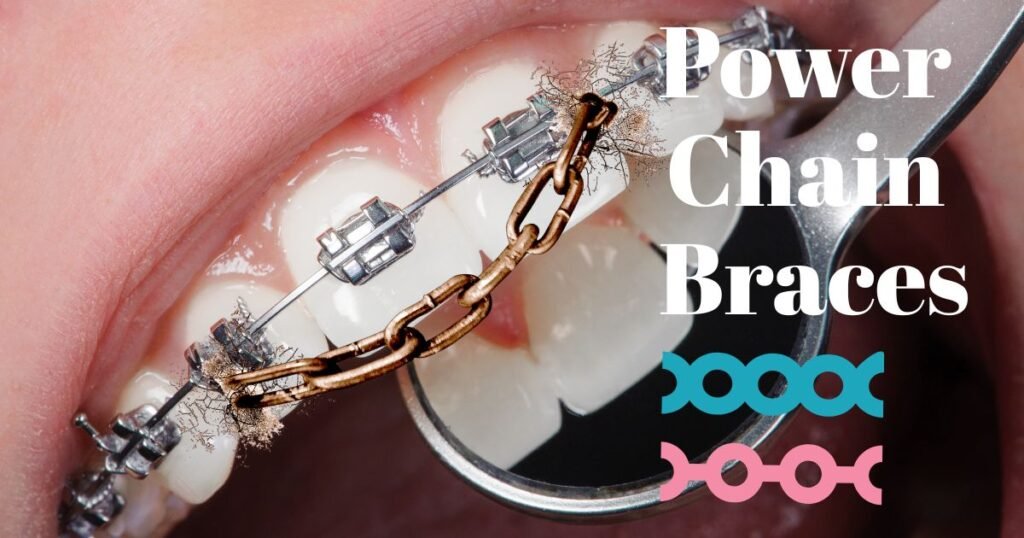Braces refer to a common orthodontic treatment to straighten teeth and fix problematic bites. One question frequently asked by patients is, Can you chew gum with braces? The short answer is that you should avoid chewing gum when you have braces, but some gum can be safe in moderation. Knowing the impact of gum on braces can help you avoid the bad and focus on the good regarding your orthodontic treatment.
First, answer the following question using an interactive tool
Can You Chew Gum with Braces?
What do you think?
Answer:
Helpful Tips for Chewing with Braces
- Choose sugar-free gum recommended by your orthodontist.
- Avoid sticky, chewy, or bubble gums.
- Chew slowly to avoid wire damage.
- Always brush after chewing to avoid sugar buildup.
Braces and Their Components Explained

Braces are comprised of various components that work together to straighten teeth. Chewing gum with braces can interfere with these delicate parts:
| Component | Function |
|---|---|
| Brackets | Bonded to the teeth to hold the archwire in place. |
| Archwire | Guides teeth into position. |
| Ligatures | Small bands or ties that secure the wire to the brackets. |
| Bands | Metal rings around the molars for additional support. |
| Elastics | Rubber bands that help correct bite alignment. |
Braces consist of many small components, and chewing gum is likely to get stuck in them or even damage them, thereby reducing the efficiency of orthodontic treatment.
Why Orthodontists Advise Against Chewing Gum

There are 4 reasons that many orthodontists will tell you not to chew gum with braces:
- Risk of Damage: When gum gets stuck on brackets and wires, it can cause breakage.
- Cleaning Challenges: It’s tough to clean even between braces and gums after braces are broken, gum debris leads to more plaque buildup and decay.
- Pressure on Braces: Overdetermined pressure from chewing can retard the process of teeth straightening.
- Loosens Brackets: Chewing gum pulls on braces, which can cause the brackets to come loose, and repairs can be expensive.
Types of Gum and How They Affect Braces

Not all gum is bad for braces. The chart below shows some differences and their ratings for braces:
| Type of Gum | Sugar Content | Stickiness | Safe for Braces? |
|---|---|---|---|
| Regular Chewing Gum | High | Very Sticky | No |
| Sugar-Free Gum | None | Less Sticky | Sometimes |
| Xylitol-Based Gum | None | Low | Yes, in moderation |
If an orthodontist allows you to chew gum with braces, the best kind for your teeth is sugar-free and xylitol-based gum.
The Case for Sugar-Free Gum
Sugar-free gum may be allowed for those with braces in some cases due to the following reasons:
- Prevents Cavities: Xylitol, the sugar substitute always in the mix, stops bacteria from sticking to teeth.
- Dry Mouth Prevention: When you chew sugar-free gum, it stimulates saliva production for oral clean.
- Not As Sticky: Sugar-free gum won’t stick to your braces as much as regular gum can.
But even with sugar-free gum, orthodontists advise against excessive use to preclude undue risks.
Proper Ways to Chew Gum with Braces

There are some rules to abide by to prevent damage to the braces if chewing gum with braces is allowed for you by an orthodontist.
| Precaution | Explanation |
|---|---|
| Choose Sugar-Free Gum | Avoids cavity formation and reduces stickiness. |
| Chew Lightly | Prevents undue pressure on braces. |
| Avoid Biting Down Hard | Protects brackets and wires from damage. |
| Rinse Mouth After Chewing | Removes residue and maintains oral hygiene. |
| Check for Loose Brackets | Stop chewing if braces feel loose or misaligned. |
Alternatives to Chewing Gum

If chewing gum with braces is not an option, consider these alternatives:
| Alternative | Benefits |
|---|---|
| Sugar-Free Mints | Freshens breath without the risk of sticking. |
| Crunchy Fruits | Apples and carrots provide oral stimulation. |
| Xylitol Lozenges | Offers cavity prevention benefits. |
| Hydration | Drinking water helps maintain fresh breath and oral health. |
Conclusion
Can you chew gum with braces? Similar to most foods, it is recommended that you avoid chewing gum while wearing braces to avoid breaking brackets and wires. But sugar-free and xylitol-sweetened gum may be an option in moderation if an orthodontist gives the go-ahead. Following proper precautions and considering alternative options can help maintain oral health and ensure a successful orthodontic journey.
Also Read>>>Invisalign vs Braces? The Ultimate Guide to Choosing the Right Option in 2025!
Also Read>>>How Much Do Braces Cost in 2025? A Complete Price Breakdown
15 detailed FAQs on Can You Chew Gum with Braces
Can you chew gum with braces?
You shouldn’t chew gum with braces because it can adhere to the braces, damaging them. Some orthodontists do permit certain sugar-free gums in moderation.
Braces are not strong enough to chew regular gum , and this can cause brackets and wires to become loose.
Sugar-free gum, and especially the kind made with xylitol, is less sticky.
Always consult your orthodontist before chewing gum.
Why is chewing gum bad for braces?
Gum can become stuck to braces and cause brackets to break or come loose, prolonging the time it takes to straighten teeth.
Gum that’s chewed repeatedly can become stuck in brackets and wires.
Braces can be displaced by excessive chewing force.
It is hard to remove stuck gums, which can add up to plaque.
Can I chew sugar-free gum with braces?
A few orthodontists permit sugarless gum because it is less sticky and doesn’t cause cavities.
And there may even be fewer bacteria in your mouth when you chew gum containing xylitol.
Chewing sugar-free gum promotes saliva, which acts to rinse away food particles.
Even sugar-free gum should be used in moderation.
What happens if gum gets stuck in my braces?
Gum can be difficult to remove from braces and can create hygiene problems.
Clean it out with a toothbrush or the interdental brush.
Wash with warm water to break down the gum.
Do not pull off the gum with sharp tools, as it may damage the braces.
Will chewing gum break my braces?
Yes, regular chewing gum can cause braces to break by weakening brackets and bending wires.
Braces are fragile, and sticky gum can pressurize them.
If a bracket pops off, a patient may need to make an emergency orthodontic visit.
To keep any damage to a minimum, you should just avoid gum entirely or stick to ADA-approved sugar-free options.
Can chewing gum delay my braces treatment?
Yes, chewing gum can interfere with your treatment by moving your aligners off course.
Gum may loosen brackets, which need to be adjusted.
It would possibly kink wires and affect alignment when aligning.
Orthodontists suggest staying clear of gum to keep from backsliding.
Are there any benefits to chewing gum with braces?
There might be some marginal benefits to sugar-free gum, such as salivary flow and fresher breath.
Having a lot of saliva in your mouth is good because saliva helps to neutralize acids and to wash away food particles.
Sugar-free gum can lower cavitiesXylitol-based gum could cut cavity risk.
Chewing Gum: We always recommend you chew gum with permission from your orthodontist.
What type of gum is safest for braces?
Xylitol chewing gum that is sugar-free is the best option, and it should be recommended by an orthodontist. It’s less sticky and not sugary like normal gum, so it does not cause holes in your teeth!
Chewing sugar-free gum is also something that will get saliva flowing (which helps to prevent plaque), which should be in your teeth care routine. Still, despite these advantages, especially in the absence of braces, if you do chew gum, do so in moderation to keep the pressure on wires and brackets to a minimum.
Always ask your orthodontist before attempting to chew any type of gum with braces. contains sugar, which helps prevent cavities. Sugar-free gum also promotes saliva production, reducing the risk of plaque buildup.
However, even with these benefits, chewing gum should be done in moderation to avoid unnecessary pressure on brackets and wires. Always consult your orthodontist before chewing any type of gum with braces.
Can I chew gum with Invisalign?
Yes, but we suggest removing your aligners before chewing gum.
Gum can get stuck to Invisalign, and it can be hard to clean.
Take off the Invisaligns whenever you are chewing gum.
Rinse your mouth and brush your teeth before placing an aligner back on.
How can I freshen my breath without chewing gum?
If gum is not permitted, there are other ways to freshen your breath.
Chewing sugar-free mints instead of gum.
Take good care of your teeth by brushing them and flossing.
Be sure to drink lots of water to stay hydrated.
Can I chew gum right after getting braces?
No, most definitely not.äre are the first few weeks after getting braces.
The initial weeks are important when it comes to getting acclimated to braces.
Gum can stress newly bonded brackets and wires.
Only eat soft foods while you’re getting used to them.
What should I do if a bracket comes off from chewing gum?
If a bracket becomes loose or falls off as a result of gum, see your orthodontist right away.
Do not chew on the side of the mouth having dental pain.
Place orthodontic wax to secure loose brackets for a brief period.
Get it to the dental clinic for repair asap.
Can I chew nicotine gum with braces?
Nicotine gum is not advised; it is sticky and can break the braces.
Nicotine gum is intended to be chewed vigorously, and brackets can be dislodged.
It can also discolor teeth and lead to oral health problems.
Think about nicotine patches, alternatively, if you’re trying to quit smoking.
What candies or snacks should I avoid if I can’t chew gum?
Patients should avoid sticky, tough, and chewy candies while wearing braces.
Stay away from caramel, toffees , and gummy candy.”
Avoid hard candies such as suckers that will pull brackets off.
Choose soft chocolates or candies for braces.
Can I chew gum after getting my braces off?
Yes, you can chew gum after braces are removed.
“Give your teeth a few days to settle in.”
Go for sugar-free gum to keep your teeth healthy.
Use a retainer after, if it is suggested by your orthodontist.
Also Read>>>Braces Color Wheel: How to Pick the Perfect Shade for Your Smile!

Dr. Niraj Ghanghoriya is a passionate dental surgeon with over 12 years of experience in clinical dentistry. He completed his BDS from the prestigious Sri Aurobindo Institute of Dentistry in 2012 and specializes in painless root canals, smile makeovers, and preventive oral care. Known for his patient-first approach and clear communication, Dr. Ghanghoriya aims to make dental knowledge accessible to everyone. When he’s not in the clinic, he enjoys writing informative dental blogs to help people take better care of their oral health.





